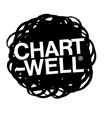The last residency project I undertook was titled The Interconnectedness of Everything. The artwork was centred around traditional Chinese medicine and its intrinsic relationship to spirit and the environment.
The aim of the art outcome was to offer and acknowledge multiple perspectives of wellness. Yet I realised during the residency that the title was far more than just that. The interconnectedness of everything speaks to us as people in the world today as we strive to understand the needs of others. Needs that cannot be broken down and segmented into health, education and the arts. Needs that are characterised by the belief that the parts are intimately interconnected and explicable only by reference to the whole.
 The ontology of wellbeing has been a constant thread throughout my work for the past decade as I‘ve actively pursued projects that support and generate social narratives.
The ontology of wellbeing has been a constant thread throughout my work for the past decade as I‘ve actively pursued projects that support and generate social narratives.
In facilitating these projects I have been guided by partnerships with community organisations such as Aotearoa Resettled Community Coalition, Hospice, Auckland City Mission, Red Cross, and arts festivals that have provided school access across Aotearoa.
These projects have consistently presented the use of art as a connective tool of care. A tool where social value becomes paramount and the arts become an upfront, visible instrument to forge community and shared value.
For me, this has been a critical repositioning of my arts practice as operational tool. I see my practice as a conduit space between health and education. Plainly speaking, not an “arts for arts sake” sentiment but a careful, configured space of participation and deep understanding that specifically results in social outcomes across arts, health and education.
Although these outcomes are not unusual, the shift that brings this conversation into a contemporary arts forum is that the projects are facilitated by a fine artist.
A small country with a large identity
We know that New Zealand has some home truths to address. We are a small country with a large identity, a place where multiple approaches or sectors must look collectively at resources and innovations through the same lens.
Although socially engaged practice is one of the newer kids on the block, it aligns itself with new opportunities in the creative sector. This practice is variously referred to as social justice, artistic activism, community-based art, cultural organising, participatory art, relational aesthetics, civic practice and social practice art.
 Regardless of the label, this way of working prioritises inclusive creative spaces with wellbeing objectives, with the knowledge that working with different people from different sectors brings fresh perspectives, encourages creativity and drives social impact. In addition, when resources are scarce, the opportunity to create greater social progress on a larger scale is well worth the discomfort of shifting from predetermined outcomes to a place of possible solution.
Regardless of the label, this way of working prioritises inclusive creative spaces with wellbeing objectives, with the knowledge that working with different people from different sectors brings fresh perspectives, encourages creativity and drives social impact. In addition, when resources are scarce, the opportunity to create greater social progress on a larger scale is well worth the discomfort of shifting from predetermined outcomes to a place of possible solution.
It is these solutions that a committed group of change-makers have been pushing for.
Te Ora Auaha highlights the relationships between the arts and wellbeing. It’s a new way of seeing, learning and doing that marries emergent solutions with intented wellbeing outcomes.
The interaction between sectors of which no individual or organisation has complete control has the potential to share the understanding of an issue and frame it within a common agenda to maximise results rather than segregate them.
It's a collective wellbeing sector, which aims to foster social bonds between the arts, health and wellbeing, and provide a framework for creative practitioners with a multi-discipline arts approach to health and education.
This shifting landscape of solution arrives with a mission to contribute to a healthier, more flourishing New Zealand through the arts. It spearheads a critical moment in our local context as Prime Minister Jacinda Ardern articulates a renewed commitment to wellbeing and to the arts.
Generating social change
I have always subscribed to the ability of the arts to generate social change and now feel that in finding my people and working collectively to create a framework, we are one giant step closer to achieving this.
The landmark alliance Te Ora Auaha will promote the growth of arts, health and wellbeing as a critical and flourishing field of practice across Aotearoa. Like many creative practitioners, Te Ora Auaha is now positioned to draw together a fragmented field of practice and generate innovative and sustainable ways of working together. The interconnectedness of everything!
I am grateful to be working at a time when our needs are recognised. I am proud of what we have achieved. I believe Te Ora Auaha is poised to advance the contribution of the arts to individual and community wellbeing in Aotearoa.
This is what we have all been waiting for: a national alliance that recognises our strength in unity and diversity, an alliance that encourages us to care and to most importantly, to make a difference.
Tiffany Singh is a social practice artist and a member of the working group of Te Ora Auaha.









